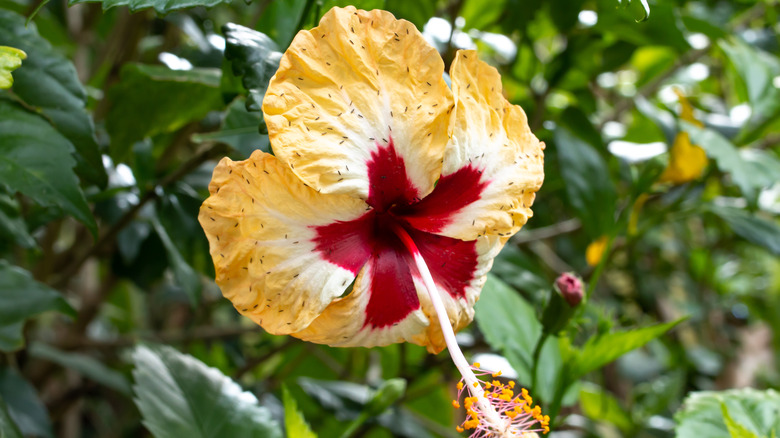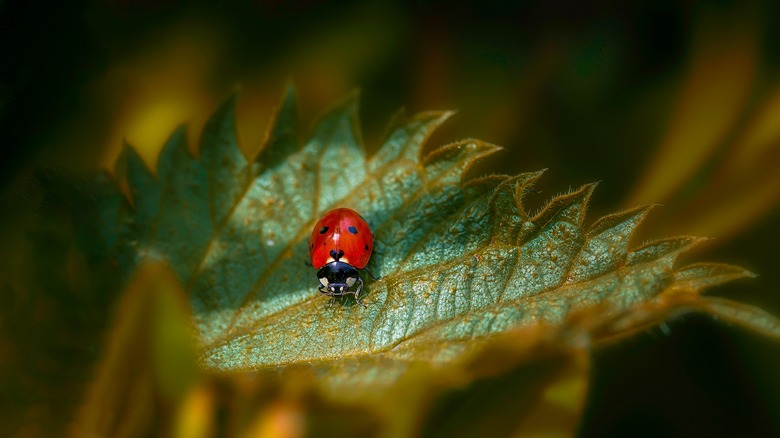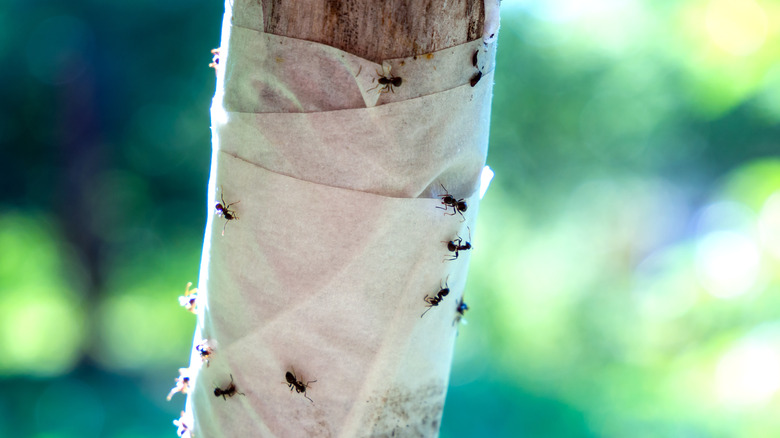How To Prevent Pests From Taking Over Your Hardy Hibiscus Plants
With its large colorful blooms and delicate ruffled edges, hardy hibiscus is a great way to attract pollinators to your garden, such as butterflies and hummingbirds, which will naturally help your neighboring fruit and vegetable plants thrive. Maintenance is important: this perennial prefers well-drained soil and a space that receives full sun, and it needs to be watered daily with about one to two inches of water. The flowering plant grows best in temperatures between 60 to 75 degrees Fahrenheit, but can withstand a cold day if temperatures dip to as low as 30 degrees Fahrenheit.
Beyond basic care, though, it is imperative to take a few extra preventative steps each growing season to keep pests at bay. Nuisances such as aphids, whiteflies, thrips, mealybugs, and ants feed on hibiscus and can cause damage to your plant's health quickly. If you notice a pest problem, it is imperative to act fast, or better yet, get ahead of it entirely.
Beneficial insects such as ladybugs act as a natural insecticide
Attracting beneficial insects is a natural way to keep unwanted insects at bay without having to use harmful pesticides. In particular, ladybugs can help keep aphids off your hibiscus plant. According to findings from the University of California, ladybugs can eat up to 5,000 aphids in their lifetime — they can also help control mealybugs, whiteflies, and mites.
To get started, you can find ladybugs at most gardening stores. After purchasing them, mindfully release the beneficial insects near the hibiscus plant, and create a proper environment for them to thrive in. A shallow dish of water will attract ladybugs, as well as certain plants they feed on, such as broccoli, kale, or collard greens, and flowering plants such as yarrow.
Before purchasing the ladybugs, you will want to make sure aphids are the culprit, and there are a few ways to identify them. Aphids are sap-sucking insects and have cornicles, which are tubes on the abdomen of the pest. Further, aphids shed their skin as they grow, so you may notice a white residue that's left behind on leaves.
Sticky tape is a natural way to trap unwanted pests on your plant
Sticky tape is another environmentally-conscious way to gain control of a pest infestation, particularly for whiteflies and mealybugs which are known to feed on hibiscus: whiteflies suck the plant sap while mealybugs feed on the plant's leaves. The tape can also trap ants, which are attracted to the honeydew mealybugs leave behind.
To get started, it is recommended to place the tape on the twigs and stems of the plant, which will trap the unwanted insects. However, the tape can also catch beneficial insects, so it is important to mindfully watch after your hibiscus plant while treating it and regularly change out the tape. Furthermore, before trying the tape method, be sure to identify the pests you have. If the issue is whitefly, you will notice white spots on your plant, and they will fly away if you shake the plant. With mealybugs, you will notice large spaces of white wax, and honeydew left on the leaves, which according to the University of California can cause fungal diseases like sooty mold, and can eventually kill your plant if left untreated.
Hibiscus, known for its natural beauty and medicinal benefits, is worth the trouble. And with a few actionable steps, you can keep your hibiscus healthy and pest free. Happy gardening!


